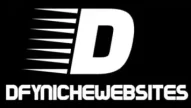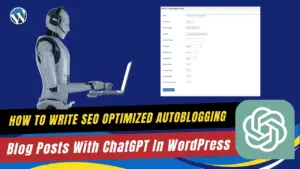
How To Install WordPress Manually In cPanel
Discover the essential steps for how to install WordPress manually in cPanel with our straightforward guide! This blog post breaks down the entire process into easy-to-follow steps, ensuring you can set up WordPress on your hosting account without any hitches. From preparing your cPanel to creating a MySQL database and configuring your site, we cover all you need to know to get started.
How to Install WordPress Manually in cPanel: A Step-by-Step Guide
Installing WordPress manually in your cPanel might sound daunting, but it’s an excellent way to gain more control over your website setup and management. This detailed guide will walk you through the process step-by-step, making it easy even for beginners.
Step 1: Prepare Your cPanel Log into your cPanel and navigate to the File Manager. Here, you will need to clear any existing files in the directory where you want to install WordPress. After cleaning up, upload the latest version of WordPress which you can download from the WordPress official site.
Step 2: Upload and Extract WordPress In the File Manager, select ‘Upload’ and choose the WordPress ZIP file you’ve downloaded. Once the upload is complete, use the ‘Extract’ function to unzip the WordPress files into the desired directory.
Step 3: Move Files to Root Directory After extraction, move all WordPress files from their folder directly into the root directory or the specific subdirectory you want your WordPress to reside in.
Step 4: Create a MySQL Database and User Go back to your cPanel home and navigate to MySQL Databases. Create a new database and note the database name. Then, create a new user and add it to the database with all privileges.
Step 5: Configure wp-config.php Navigate to your WordPress files in the File Manager, locate the file named ‘wp-config-sample.php’, rename it to ‘wp-config.php’, and edit the file. Fill in your database details, including name, username, and password.
Step 6: Run the Installation Visit your website URL where you installed WordPress. You’ll be greeted by the WordPress installation page where you’ll set your site title, admin username, password, and email. Complete the installation and log into your new WordPress site.
FAQs: Installing WordPress Manually in cPanel
1. What do I need before installing WordPress in cPanel? Before you begin the installation, make sure you have access to your web hosting control panel (cPanel), the ability to create MySQL databases, and the WordPress installation files from the official WordPress website.
2. Can I install WordPress in a subdirectory instead of the root directory? Yes, you can install WordPress in either the root directory of your web hosting account or a subdirectory, depending on your needs. During the ‘Move Files’ step, simply place the WordPress files in your desired directory.
3. What if I encounter a database connection error? A database connection error typically means there was an issue with the database name, username, or password you entered in the wp-config.php file. Double-check these credentials and make sure they match exactly with what you created in the MySQL Databases section of your cPanel.
4. How do I secure my WordPress installation? To secure your WordPress installation, use strong usernames and passwords, keep your WordPress, themes, and plugins updated, and consider adding security plugins that help block potential threats.
5. What should I do after installing WordPress? After installing WordPress, consider configuring settings such as permalinks, reading, discussion, and media. You can also start installing essential plugins and selecting a theme to design your site.
Conclusion
Manually installing WordPress via cPanel is a valuable skill that can enhance your control over your website and improve your understanding of its underlying structures. By following the steps outlined in this guide, you’ve taken a significant leap towards becoming proficient in WordPress management.
Remember, the process doesn’t end with the installation. Ensuring your website’s security, optimizing performance, and regular updates are crucial next steps to keep your site running smoothly and efficiently. Additionally, with tools like the My Content Creator Pro WordPress Plugin, you can streamline content creation, making it easier to populate your new site with high-quality, SEO-friendly content. Check out this powerful tool here: My Content Creator Pro.
Finally, for those who are new to WordPress, leveraging free resources like WP Learning 101 can be incredibly beneficial. These resources provide foundational knowledge and practical tips that help you navigate through your WordPress journey more confidently. Start your free training today: WP Learning 101.
Embrace the journey of continuous learning and development with WordPress to ensure your site not only functions optimally but also stands out in the digital landscape.
"Master WordPress Today With 31 Absolutely Free Tutorials for Beginners!"
Here Are Some Of Our Services
Content Creation Services
Customers Reviews
DFY Niche Websites Testimonial

Best WordPress Content Creation Plugin!
Over 4,000 Website Using This Powerful WordPress Plugin.
WP Learning 101 Testimonial













